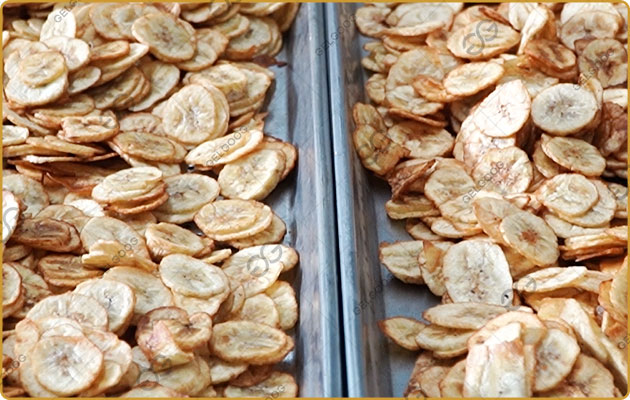Plantain chips – that addictive, crispy, slightly sweet or savory snack – seem simple. But transforming a raw, starchy plantain into those perfectly golden, shelf-stable chips involves a fascinating, carefully controlled factory process. Let’s peek behind the scenes!
- Sourcing & Receiving
It all begins with green, unripe plantains. Why green? They’re firm, starchy, and have lower sugar content, which is crucial for achieving the right texture and preventing excessive browning or burning during frying. Factories source large quantities, often from specific suppliers meeting quality standards.
- Washing & Peeling
Plantains move on conveyor belts into high-pressure washing systems. This removes dirt, soil, pesticides, and any surface contaminants – essential for food safety.
Cleaned plantains then go through mechanical peelers. These machines efficiently slice off the tough outer skin. Workers often perform a final manual inspection to ensure all peel remnants are removed before slicing.
- Slicing
Consistency is king for snack chips! Peeled plantains are fed into high-precision slicing machines. These use razor-sharp blades to cut the plantains into uniformly thin slices, typically between 1-2 mm thick. This consistent thickness ensures even cooking and the perfect crunch.
- Frying and De-oiling
Fry the banana chips in oil at 165-185°C for 180-240 seconds until golden and crispy. After frying, drain excess oil through a sieve to ensure a light texture.

- Seasoning
While still warm, the chips enter the seasoning drum. This rotating cylinder evenly coats the chips with the desired flavor – be it simple salt, spicy chili, tangy vinegar, barbecue, or other blends. The warmth helps the seasoning adhere.
- Cooling
Hot, seasoned chips can’t be bagged immediately! They travel through a cooling conveyor system, often with ambient or slightly chilled air blowing over them. This brings them down to room temperature, stops the cooking process, and allows the texture to fully crisp and set. Moisture escaping during cooling is crucial for shelf life.
- Inspection & Packaging
Before packaging, chips typically pass under metal detectors and may go through optical sorters. These automated systems detect and reject any foreign objects (like metal fragments) or visual defects (discolored or broken chips).
Finally, the chips are weighed and fed into packaging machines. They’re filled into bags made of specialized multi-layer plastic film (like metallized PET or polypropylene). These films are critical as they provide an excellent barrier against moisture, oxygen, and light – the main enemies of crispness and freshness.
Bags are sealed airtight (often using nitrogen gas flushing to displace oxygen inside the bag) and coded with batch numbers and expiration dates. Cases are packed, palletized, and shipped to stores.
Why It Matters
Understanding this process highlights the precision involved. From selecting the perfect green plantain to controlling the fryer temperature to the science of the packaging, each step ensures the chips are safe, deliciously crunchy, and stay fresh until they reach your pantry. It’s a blend of agricultural sourcing, food science, and efficient engineering that delivers that satisfying snack we love!
If you want to start a banana chips processing business, you can feel free to contact us. We are a banana chips processing line manufacturer and supplier and can provide customized solutions.
Hi, this is a comment.
To get started with moderating, editing, and deleting comments, please visit the Comments screen in the dashboard.
Commenter avatars come from Gravatar.